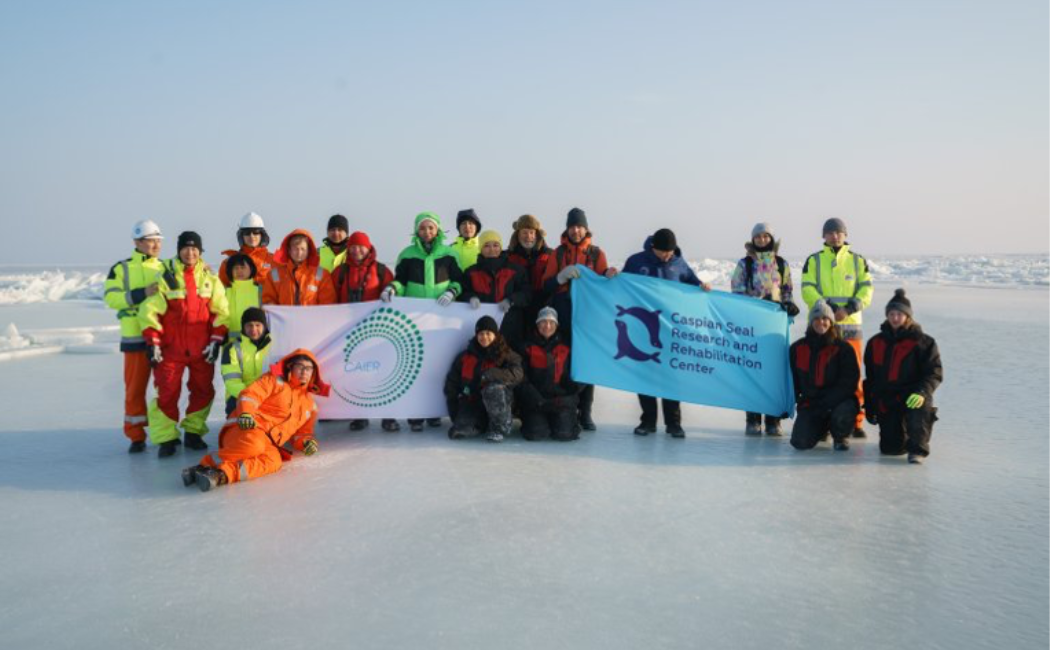
02 February, 2023
EXPEDITION LOG:
...
THE CASPIAN SEA, AN ENVIRONMENT AT STAKE
The Caspian seal, a species native to the Caspian Sea in Eastern Europe and Central Asia, is facing significant challenges due to pollution, illegal hunting, global warming, and disease. To address this critical situation, TAJRC has partnered with the Caspian Seal Research and Rehabilitation Center (CSRRC) in Kazakhstan to protect and conserve this endangered species, which is listed on the red list. Over the course of many centuries, the Caspian seal has been relentlessly hunted, resulting in a staggering decline in its population. Since the early 20th Century, the estimated number of seals has plummeted from 1 million to just above 70,000. Recent assessments indicate that the population is currently decreasing by 3-4% annually.
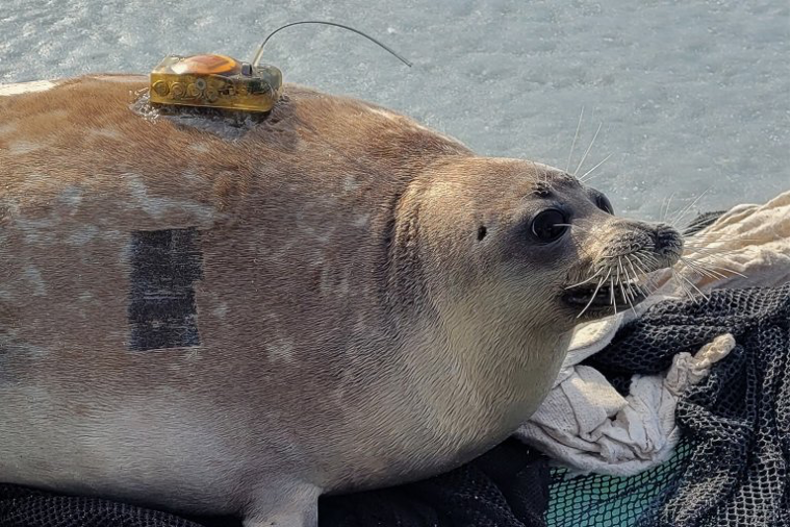
The scientists equipped the treated seals with electronic tracking sensors, which will provide precise information about the animals' location, immersion depth, and whether they are on ice or in water. Credits: Tommi Nyman
In 2009, the International Union for Conservation of Nature designated the Caspian seal as an endangered species. In 2018, the Caspian Seal Research and Rehabilitation Center (CSRRC) in Kazakhstan initiated efforts to protect the species, leading to its inclusion in the country's Red Book. However, despite these conservation measures, the Caspian seal continues to face persistent threats such as poaching, oil spills, pollution, diseases, and the impacts of climate change. These ongoing challenges pose a severe risk to the survival of the species. By collaborating with the CSRRC, KAUST aims to tackle these threats head-on and contribute to the conservation and preservation of the Caspian seal.
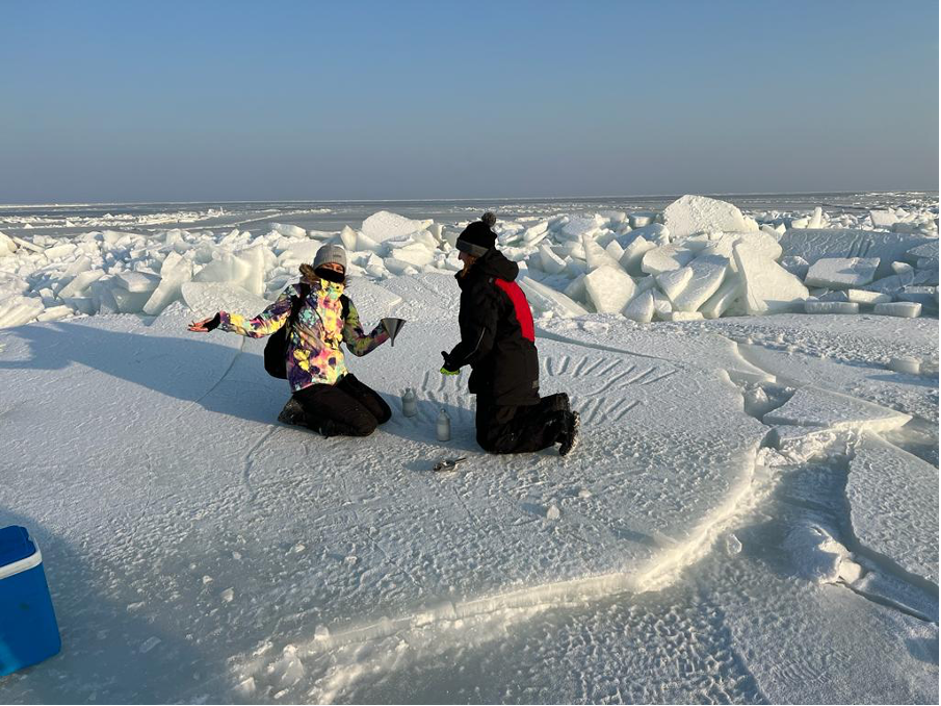
Interrupted collection of snow samples. Credits: Prof. Tommi Nyman
“Oil, industrial and heavy metals, agricultural pesticides, radioactive waste, wastewater, and household waste have all entered the sea and poisoned the seal’s habitat. Not only that, we have estimations that show that up to 70% of female seals may now be barren, unable to produce offspring,” says Ms. Aselle Tasmagambetova, founder of the CSRRC. According to the Centre’s website, another reason for the seals’ decline is due to illegal fishing nets being put out in which seals are caught. “Since we opened our seal rehabilitation center in Aktau, Kazakhstan two years ago, we’ve treated around 70 seals. Approximately half of these were caught in illegal nets, so this is definitely an issue that needs addressing,” she says.
As stated on the Center's website, the decline of the seals is attributed to the presence of illegal fishing nets that inadvertently capture the seals. The director of the seal rehabilitation center in Aktau, Kazakhstan, emphasized the significance of this issue by stating that out of the approximately 70 seals treated at the center over the past two years, around half of them were ensnared in illegal nets. It is evident that addressing this problem is of utmost importance.
THE EXPEDITION
From January 27th to February 2nd, 2023, CSSRC conducted the sixth scientific expedition to the Caspian Sea aboard the "Mangystau-3". Areas of study included the port of Bautino, Kulaly Island, Novy Vostochny Island, the Tyub-Karagan peninsula, Podgorny Island, the Kalamkas region, and the port of Bautino.
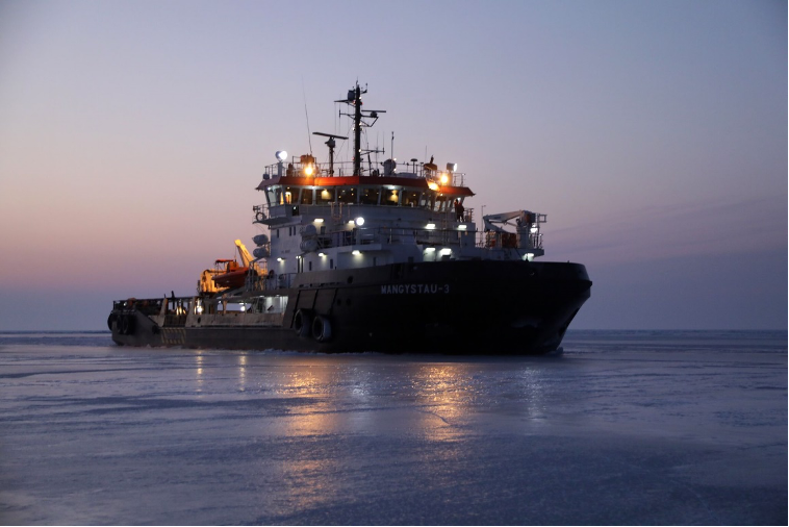
Scientific expedition to the Caspian Sea on the "Mangystau-3" ice breaker, Credits: @Sarah_DelBen
The mission of the expedition was to directly evaluate the current status of the Caspian seal population in the Kazakhstan part of the Caspian Sea, to install electronic tags on the animals, and to provide veterinary care as needed.
Eminent professors in marine biodiversity, scientists in the fields of ecology and evolutionary biology from the United States, Saudi Arabia, and Norway, gathered in Kazakhstan for the first time to participate in the research activities in the Caspian Sea. The team included scientists working under the guidance of Prof. Daniel Costa, prof. Carlos Duarte, prof. Tommy Nyman and Prof. Simon Goodman.
While studying the Caspian seal population, the researchers aim to identify potential threats to this species, such as loss of habitat, pollution, overfishing, and hunting, and to develop strategies to mitigate these threats. The research is focused on gaining crucial information about the health and well-being of the Caspian seal population, and will contribute to the efforts to conserve the species. Scientists are also keen to track changes in the population over time, which could provide valuable insight into the overall health of the Caspian Sea ecosystem.
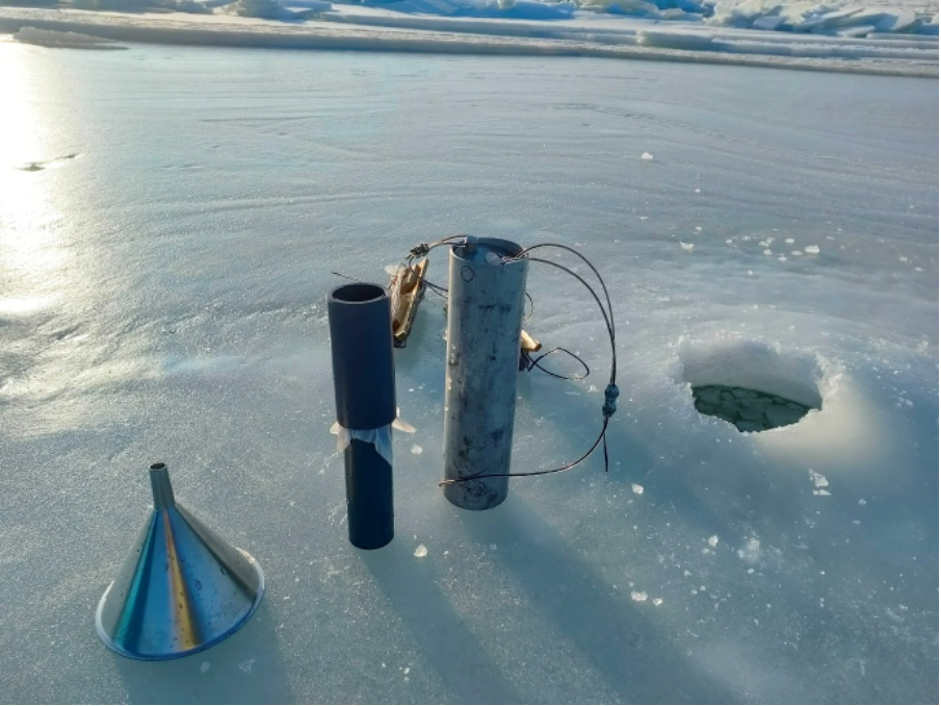
Sampling devised used for collection of surface seawaters. Credits: Anastasiia Martynova
During the expedition to the Caspian Sea, biomaterials from 18 seals were collected, including six adult females and twelve pups. Electronic satellite tags were attached to six adult seals to track their location and diving depth, as well as to determine how much time seals spend under water and on ice floes. Based on the collected biomaterials, a broad range of scientific topics are currently being studied to gain a comprehensive understanding of the health and welfare of the Caspian seal population.
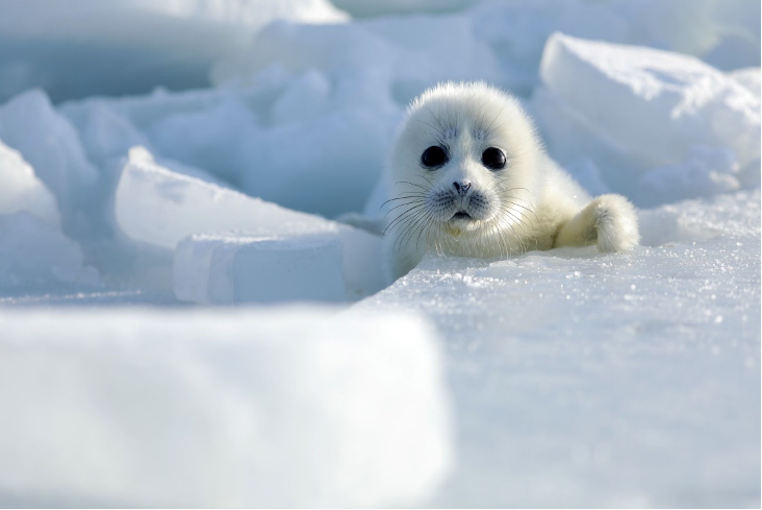
Caspian seal pups under investigation. Credits: @Sarah_DelBen
The research covers various areas, including:
• Basic health assessments, blood analysis, serum biochemistry, and blood volume measurements.
• Stress and immune hormone analysis, including cortisol level measurements.
• Immune function analysis, including mRNA expression and measurement of cytokine and inflammation markers in plasma and fecal samples.
• Environmental pollutant analysis, including mercury, persistent organic pollutants, perfluoroalkyl substances, organochlorine compounds, and insecticides measured in vibrissae, hair, blood, and urine samples.
• Biotoxin analysis, including saxitoxins, brevetoxins, and ciguatoxins measured in fecal and urine samples.
• Pathogen analysis, including viruses such as canine distemper virus, phocine distemper virus, influenza, coronaviruses, herpes viruses, and parainfluenza virus, as well as Toxoplasma gondii and various species of Leptospira and Brucella, measured in serum, nasal, oral, rectal, vaginal swabs, urine and fecal samples.
• Macroparasite analysis, including sea lice and gastrointestinal parasites; genetic analysis and gene expression analysis of milk, fat and muscle biopsy samples.
• Dietary analysis using fecal and urine samples, as well as rectal scrapings.
• Based on the information collected during the expedition, lightweight, minimally intrusive electronic tags are also being developed, which can track vital physiological signs, movements, and real-time location of the seals.
Additionally,environmental samples of surface waters and snow were collected for the analysis of microplastic pollution in the environment. Because of our dependence on plastic materials, microplastic pollution has become a major issue for the environment. In the environment, organisms can accidentally or intentionally ingest and inhale these small particles, which may lead to inflammation, damage to digestive tract and tissues, and leaching of harmful chemicals. Considering that the adult seals mate, breed and nurse their pups on the ice sheets, we were interested to assess the levels of microplastic pollution in the Caspian Sea because of the potential problems to the endangered seal population.
Sea surface water and snow (from the ice) samples were collected in the Northern part of the Caspian Sea. These samples will be later processed in the TAJRC lab in KAUST in order to reveal the levels of microplastic pollution in the region.
THE PEOPLE
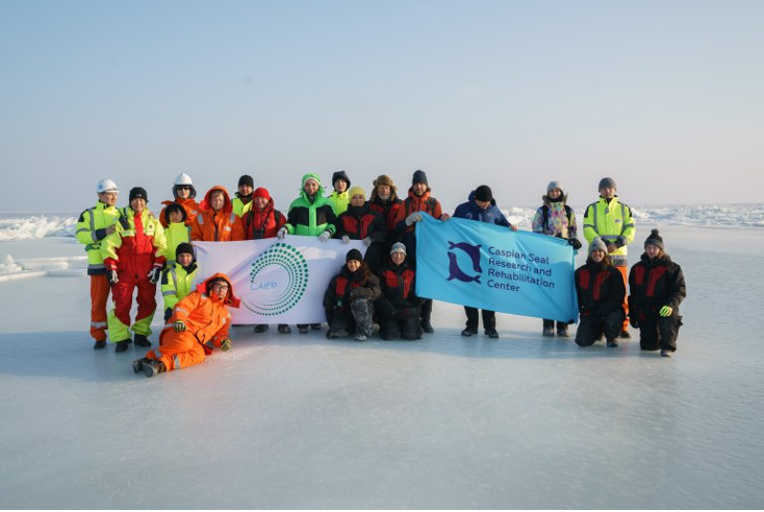
The expedition team is composed of scientists and marine experts representing a diverse range of countries, including the Saudi Arabia, USA, UK, Kazakhstan, and France. Credits: Zhanarbek Amankulov
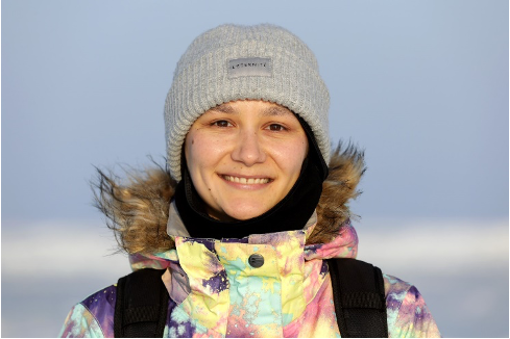
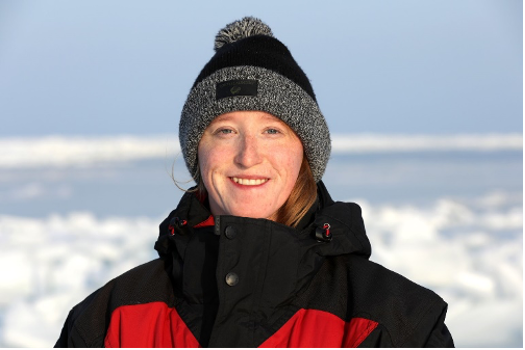
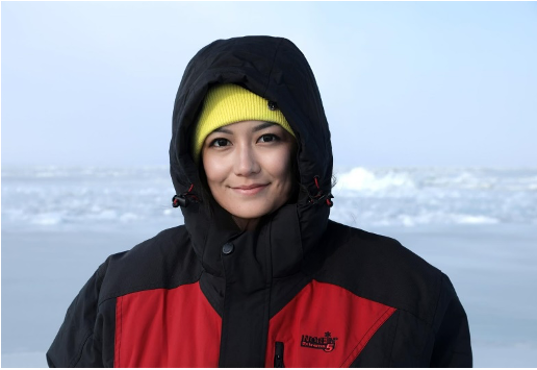
Anastasiia Martynova, Jessica, Jessica Breavington and Altynay Kaidarova from KAUST. Credits: @Sarah_DelBen
Amazing work all!
See the work by the Caspian Seal Research and Rehabilitation Center (CSRRC) HERE: